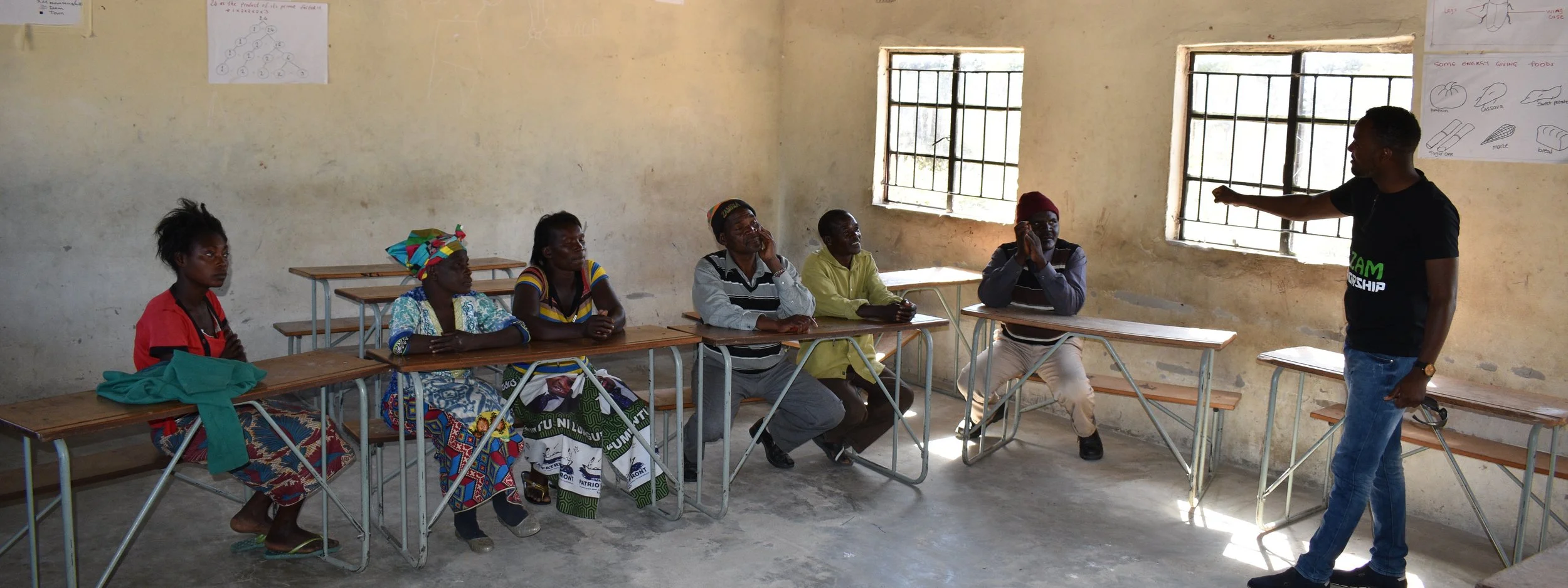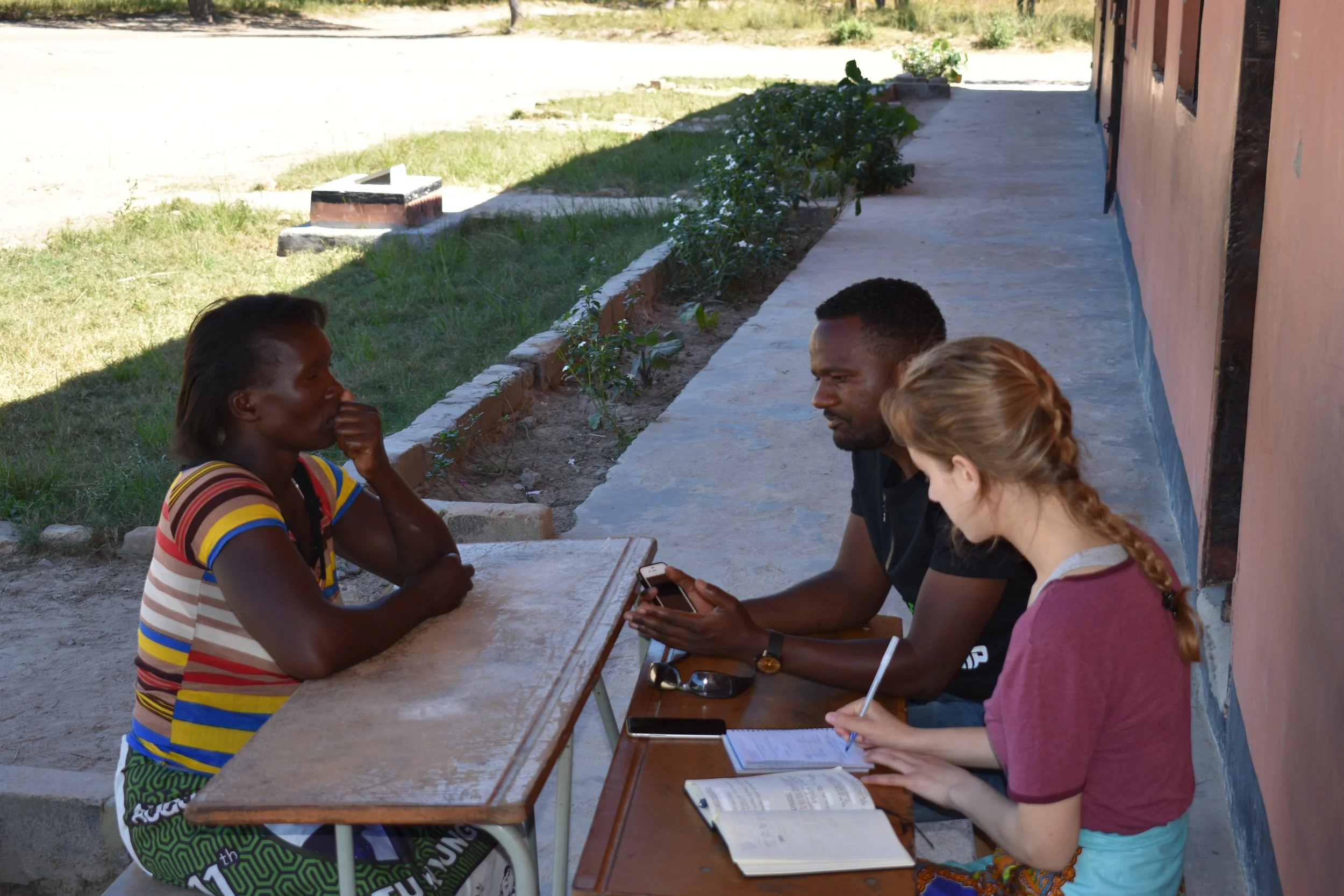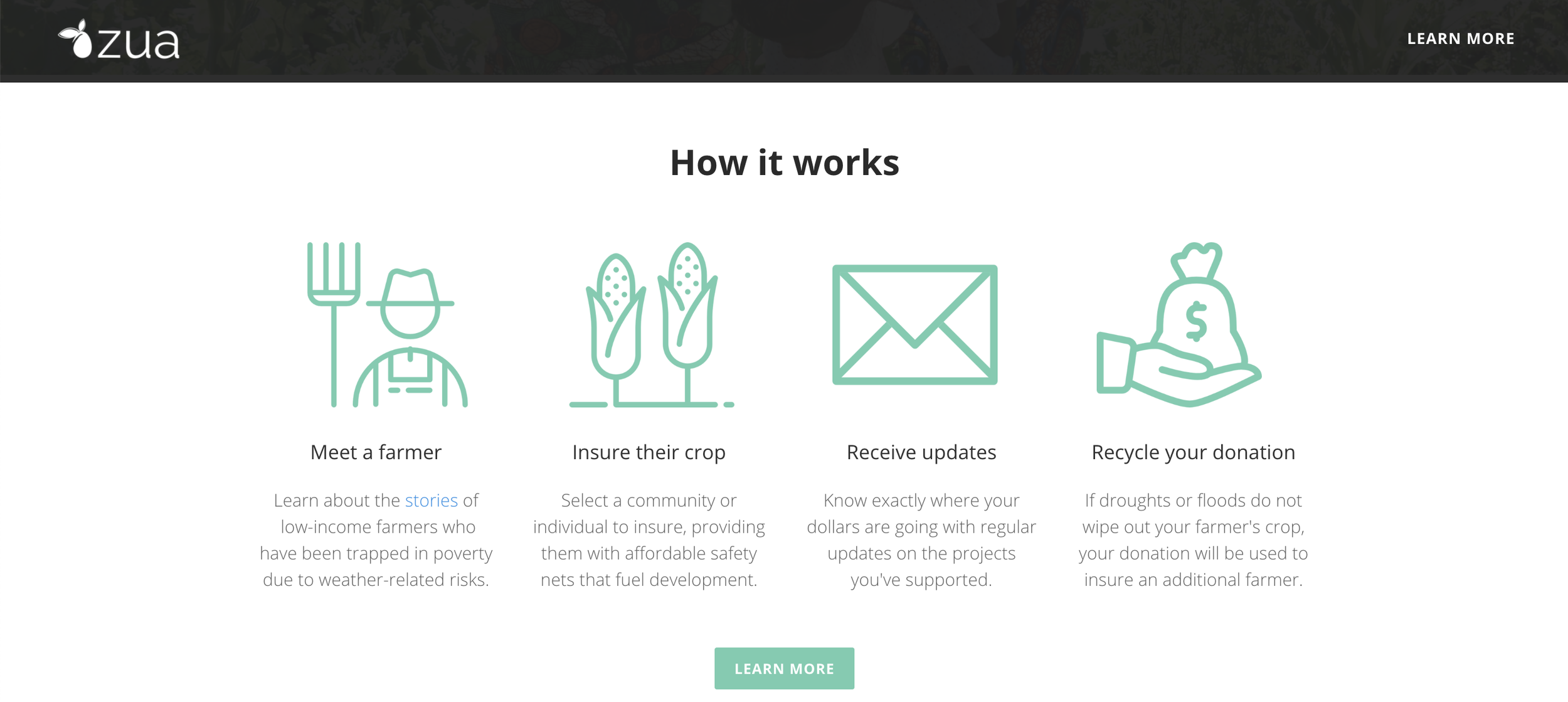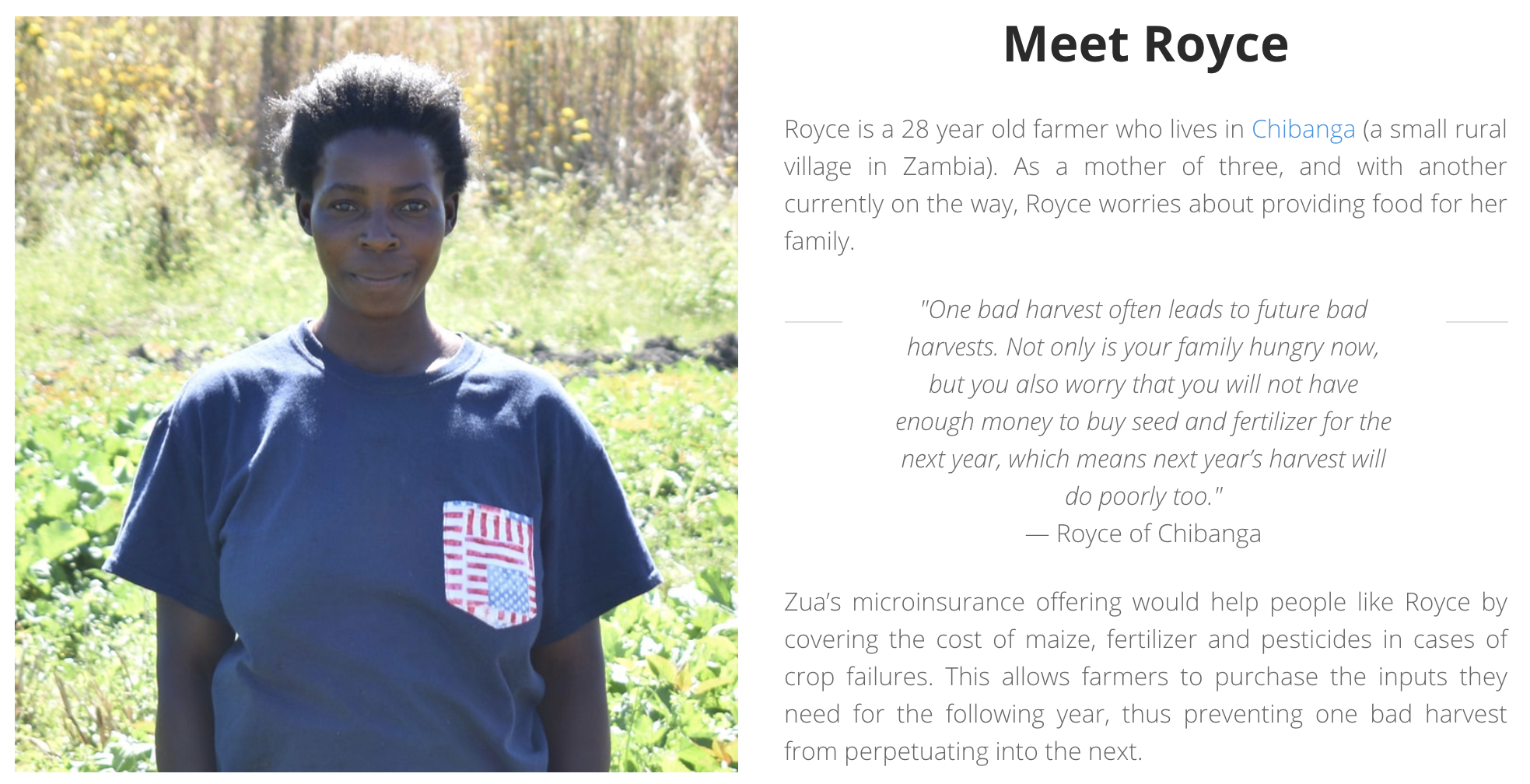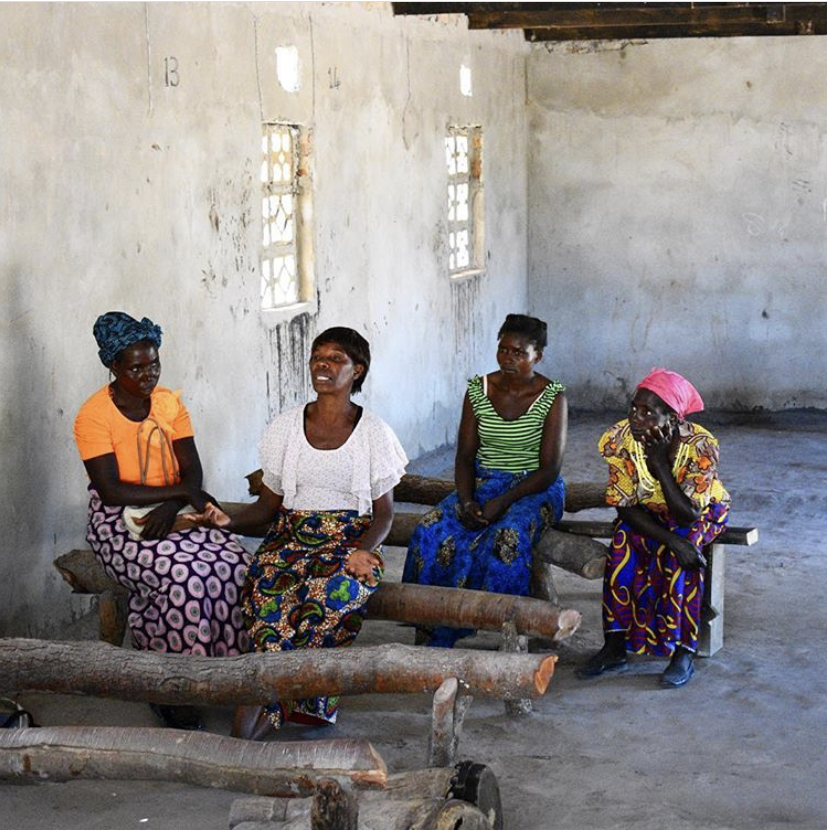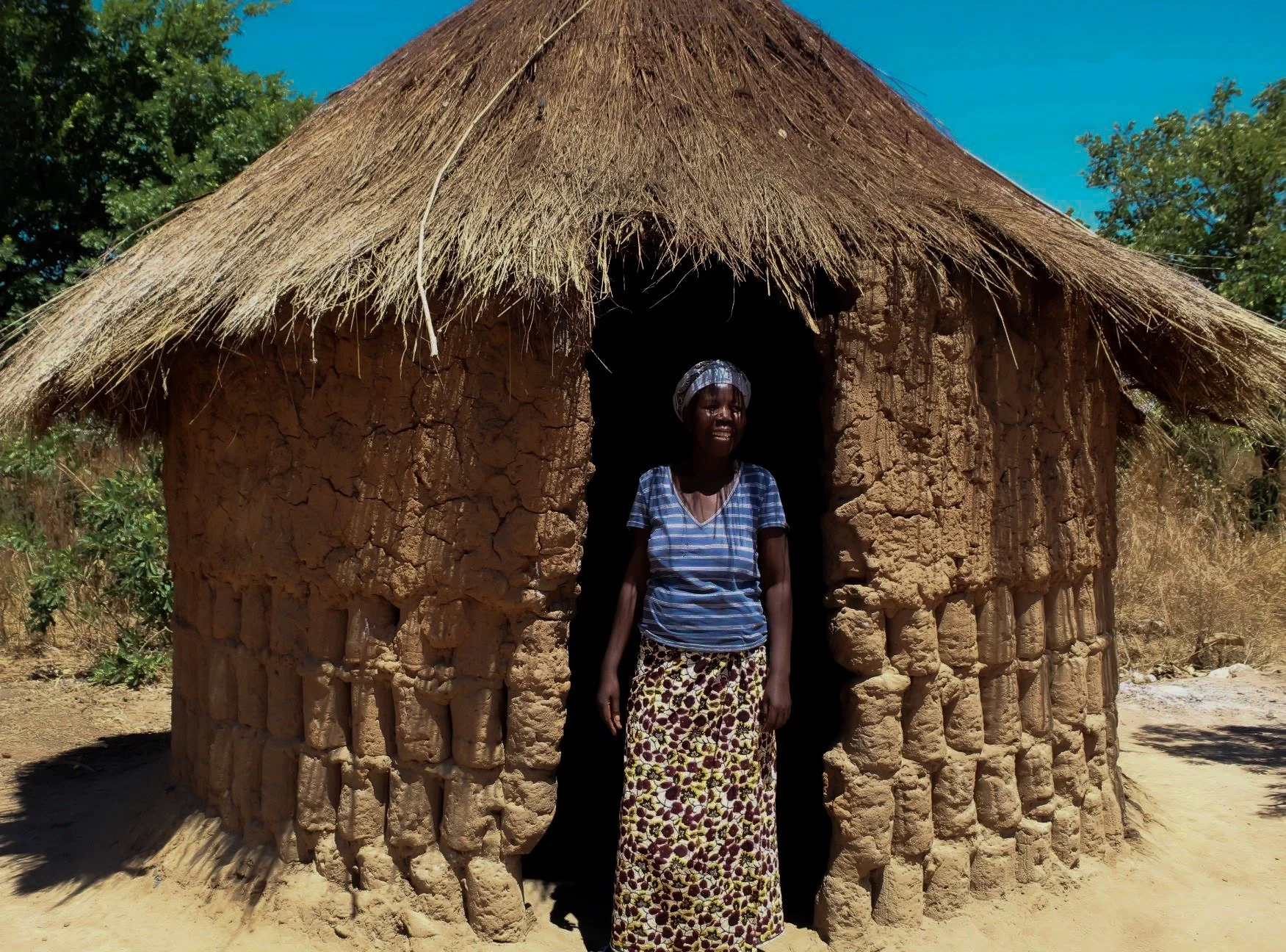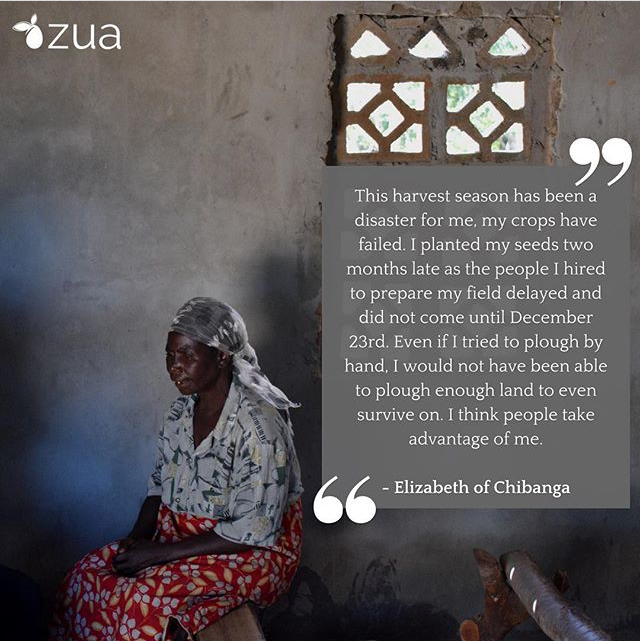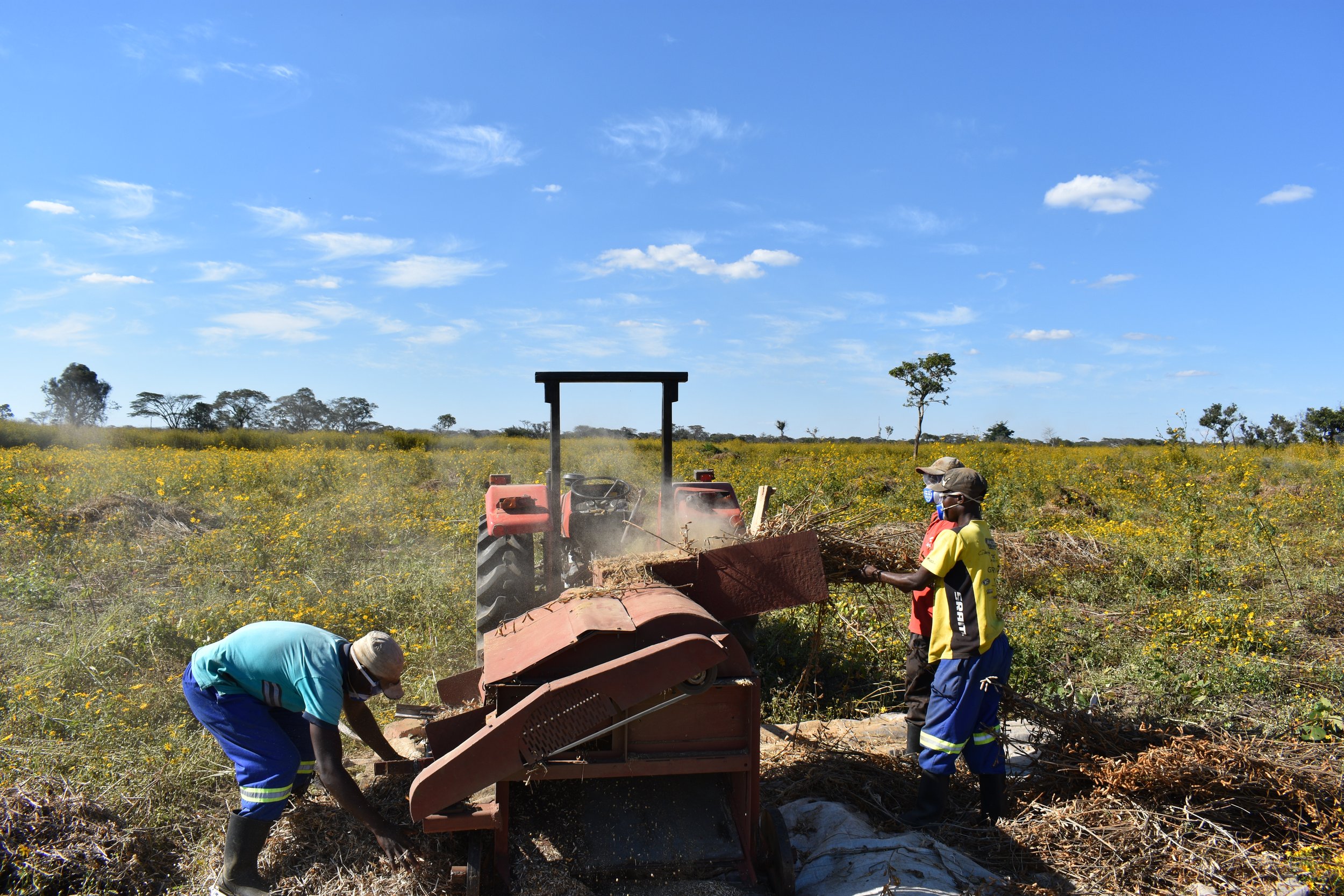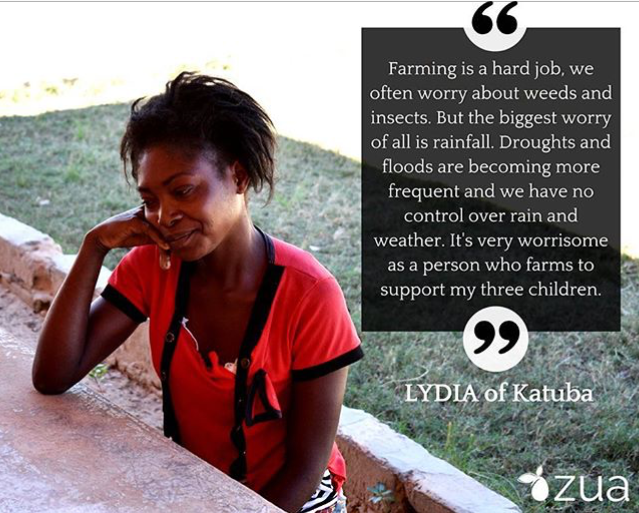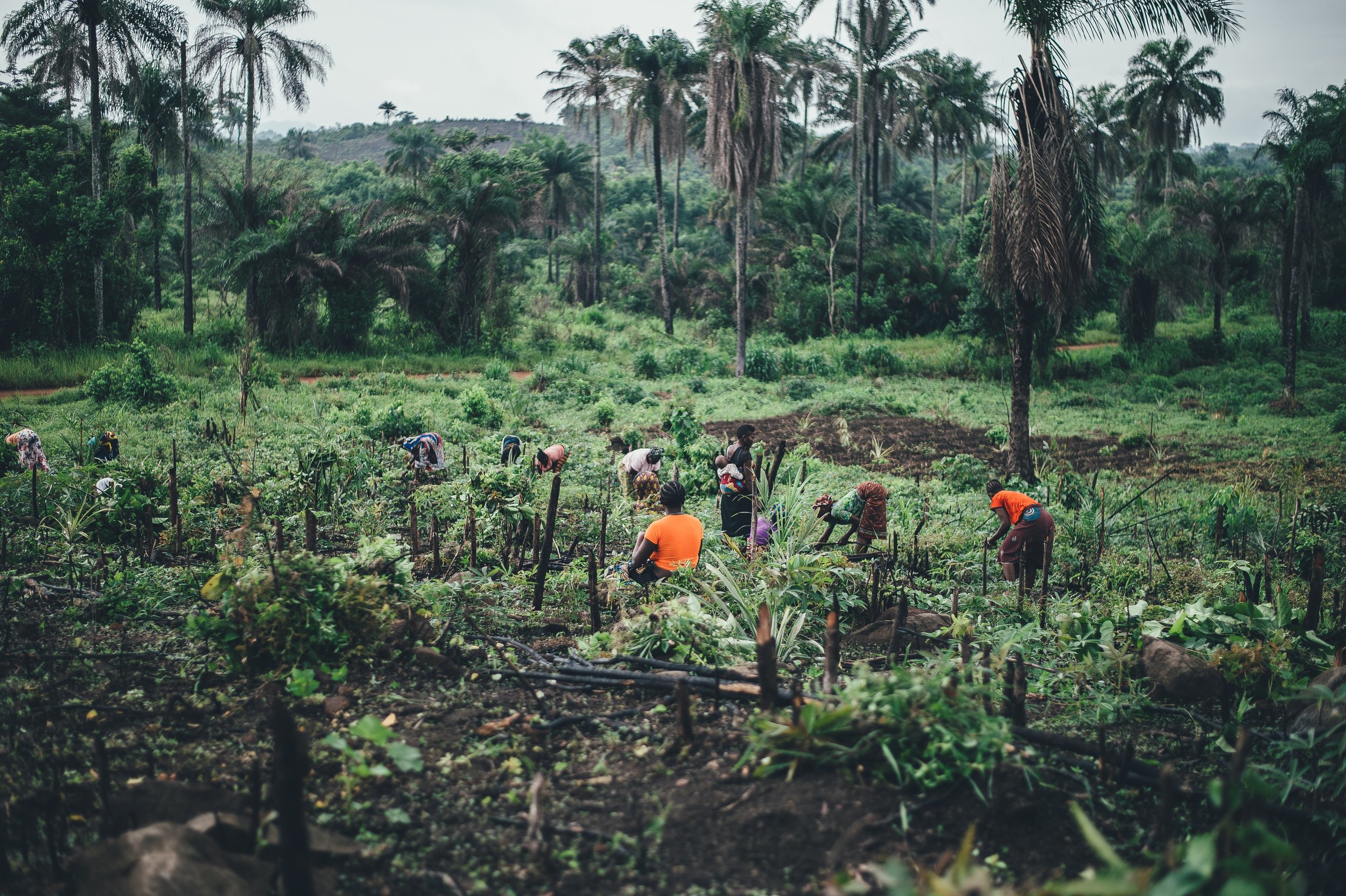
Tackling Food Insecurity at the Source
Zua Microfinance
Summary
Increasing climate instability, including frequent droughts, in Zambia pose a threat to the livelihoods of small-scale farmers relying on rain-fed agriculture. Zua bridges communities to tackle the growing problem of food insecurity for rural Zambian farmers through peer-to-peer micro-insurance. My role involved developing a strategy for making this model functional by increasing brand awareness with limited funds and within the time frame of the farmers’ first harvest.
Roles & Responsibilities
Founding member of the start-up
Business model development
Market research
Zero-paid social marketing strategy
Communications standards
Social media campaigns
Zua works in partnership with local NGOs to communicate with farmers and provide financial literacy training.
The Challenge
We found that micro-insurance would be helpful for these farmers who relied on rain to feed their crops, an inherently risky dependence. Micro-insurance would give the farmers a safety net, allowing them the opportunity to access other financial services and avoid the disastrous effects of weather-related low yields.
To support this model, we needed to be able to fulfill the claims that they were made. We turned to a crowdfunding model to leverage the power of a community to pool a collection of funds together, making a bigger collective impact. Funds that were not used to fulfill insurance claims and the funds that were paid back after a loan would be recyclable. This recyclability of funds made the model much more sustainable.
After years of research and interviews with each farmer being served by Zua’s pilot project, our team discovered that farmers were not interested in receiving money. Instead, they wanted tools, resources, and training to help them improve their productivity and adapt to the increasingly unpredictable weather.
Each farmer was interviewed to better understand their unique needs.
Some results from an early market survey to understand donor needs and concerns.
Real quotes and stories provided by the farmers were used to demonstrate the real-life implications of the project.
The Strategy
We started with market research, targeting the young working professional demographic. This group was very much aware of social needs and had a desire to make an impact but wanted a deeper connection to those being served. As such, my strategy relied heavily on storytelling and sharing the farmers’ point-of-view to reconcile their personal goals with our mission and the donor.
Given Zua’s social model, I leveraged the low entrance barrier and global network that social media provides to build a community of donors. Thus, Zua became a bridge between two communities by embracing a global collaborative model for solving climate-related risks and food insecurity in one of the most vulnerable communities in southern Africa.
The Impact
Zua’s marketing efforts were entirely digital as we aimed to engage a younger group of donors. Once we began developing a network of donors and supporters, the power of community contributed to the growth of the organization. I also coordinated partnerships with like-minded influencers to improve the organization’s visibility. Soon, Zua was the centre of a conversation about the role of agriculture and climate awareness in development.
At the end of the harvesting season for farmers, Zua met its initial funding goals and was able to complete its pilot project. Due to the extreme drought in central Zambia at the time, farmers saw their crop yields decrease by 70 percent compared to the 10-year average. Therefore, farmers participating in the pilot project benefitted tremendously from having insurance that year. The payouts were used to purchase better seeds and equipment to improve their harvests for upcoming seasons.


